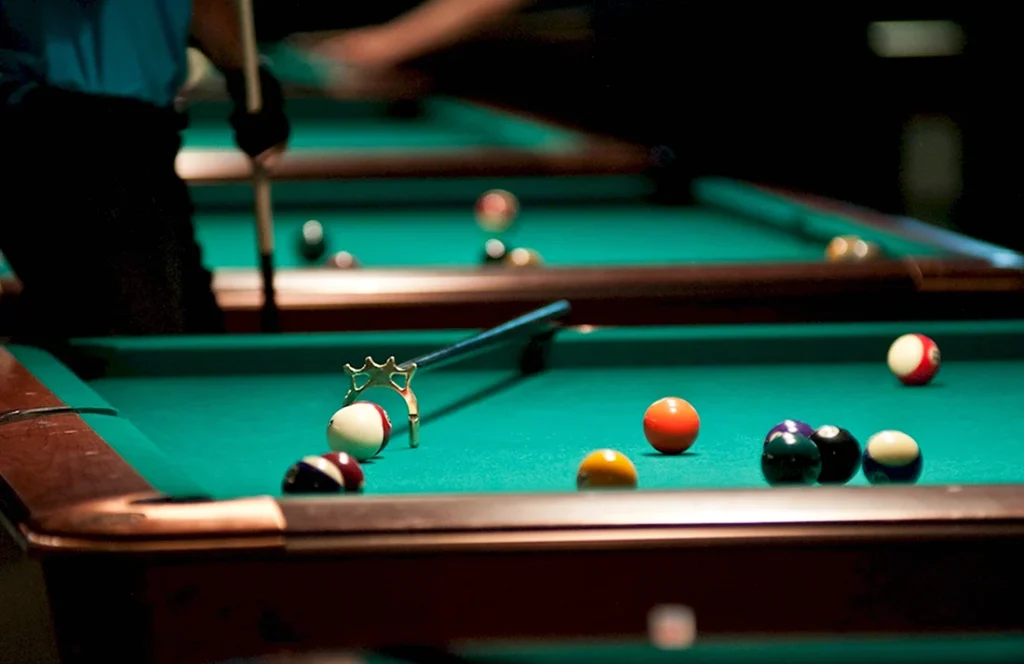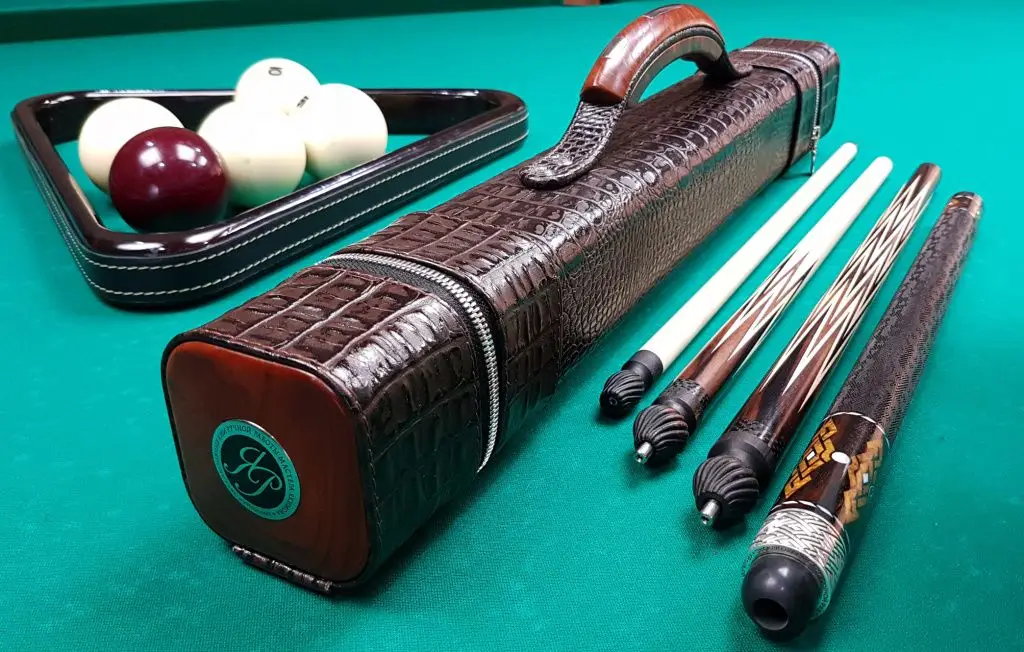Few people know that the game of carambole originated with aristocrats who used it as a means of honing tactics and dexterity. Originating in France, it has surprisingly absorbed the culture and traditions of its time, becoming a unique pastime where not only precision but also strategy are important. The history of carambole can be traced back to the origins of the French aristocracy and beyond, spreading around the world.
The history of carambol: how it all began
The first mention of a game resembling carambol dates back to the mid-15th century. At a time when luxurious carriages crossed the narrow pavements in the streets of Paris, French aristocrats were looking for refined ways of entertainment that would match their high status. Thus came the real game, played on specially designed wooden tables with marble balls and cues decorated with gold carvings. France is the birthplace of many elegant entertainments, and carambole was no exception. It was a demonstration of refinement and mastery of space, where every stroke became an art form.

The spread of carambol around the world
Among the aristocrats of France, carambol was an integral part of leisure time, but soon the game went beyond the French castles and began to conquer the rest of the world. After the French, the British were the first to appreciate the gambling pastime, and they adapted it to make the process even more spectacular. In England, carambol got elements of rivalry, and it gradually began to be included in the number of sports disciplines. But it was not only Europe that was influenced by this mesmerising game – carambol spread around the world at an astonishing rate.
It found its niche in America, where it was brought by French emigrants at the end of the 18th century. The look changed in different countries, adapting to local traditions and habits, but it always retained its elegance and prestige. In India and Egypt people played in the streets in the open air, which gave a special atmosphere of competition and excitement.
The rules of carambol: nuances and chips
At first glance the rules may seem quite simple: three balls are placed on the table without holes, the task is to strike a blow, at which the bat must touch the other two balls. But as soon as the player begins to understand the details, there is an abyss of nuances and opportunities for manoeuvre. The shot must be crisp, precise, yet subtle.
One of the tricks is the ability to control the spin of the ball. At the professional level it is important not just to hit other balls, but to do it in such a way that the bat takes the most favourable position for the next shot. The skill lies in anticipating your opponent’s actions and controlling every moment on the table. Here you cannot rely on chance – it is important to think strategically and anticipate.
Comparison of carambole with other types of billiards
When making comparisons, unique features are often mentioned. Unlike pool or snooker, carambol does not use a hole, which fundamentally changes the strategy of the game. Here the player cannot rely on simple luck or hitting a ball into a hole, instead it is all about calculation, trajectory and accuracy. In pool, the emphasis is on getting rid of all the balls as quickly as possible, while in carambola each shot is part of a complex chain that must lead to a perfect result.
The peculiarity is that there is no obvious element of confrontation. Players compete, but not just knocking balls out, but demonstrating their professionalism through the ability to precisely control each stage of the stroke. This makes carambol particularly entertaining, because not only the final score is important, but also the technique itself.
Playing technique and equipment: How to master carambol
 To reach the highest level of skill, you need not only to understand the rules, but also to perfect your technique to the point of automaticity. Let’s start with the most basic thing – hitting with the cue. The blow should not be too sharp, but not soft either, it is important to “feel” the ball in order to give it the necessary rotation. Masters use different types: kick shots, spins, as well as complex tricks that allow you to control the trajectory of the ball.
To reach the highest level of skill, you need not only to understand the rules, but also to perfect your technique to the point of automaticity. Let’s start with the most basic thing – hitting with the cue. The blow should not be too sharp, but not soft either, it is important to “feel” the ball in order to give it the necessary rotation. Masters use different types: kick shots, spins, as well as complex tricks that allow you to control the trajectory of the ball.
Special attention is paid to angles and the physics of motion. Professionals spend years studying reflection angles and contact points. For example, one of the most difficult techniques is the triple touch, where the bat must bounce off the boards several times before reaching the second ball. Details such as hand placement, stance and breathing control are crucial to the technique, all of which affect accuracy and performance.
Carambol equipment: from tables to balls
To play carambol it is important to have quality equipment: a special table without holes, covered with a special fabric that ensures smooth and predictable movement of the balls. The balls are made of phenol-aldehyde resin, which gives them the right heaviness and strength. The cue has a narrower tip compared to a pool cue, which allows for more precise control of the shot. It is also necessary to take into account that the surface of the table should be perfectly flat and the cloth should be stretched without folds, because any deviation can affect the trajectory of the ball.
The game of carambol in Russia: traditions and modernity
The game of carambol came to Russia at the end of the 19th century and quickly found its fans among the nobility. Real tournaments were organised in the homes of aristocrats, and the best players were considered a model of refinement and skill. In the Soviet Union, interest declined somewhat, giving way to mass sports, but in recent years there has been a revival of the game.
Today, local tournaments and carambol championships take place in Russia, bringing together the best participants from different regions. The popularisers are clubs and associations that strive to bring the discipline back to its former level.
Tournaments and competitions: highlights and champions
Today, carambola tournaments are held all over the world, from Paris to Tokyo. These competitions attract both professionals and amateurs, because it is not only a sport, but also a show. Among the most famous is the World Carambol Championship, which annually brings together the best competitors and allows spectators to savour real skill.

Renowned champions Torben Eriksen and Marco Duval demonstrate amazing mastery of technique and make the game truly exciting. Tournaments are often held in historic buildings to emphasise the discipline’s aristocratic past.
Conclusion
 The cultural heritage continues to inspire today. Despite its age-old history, the game of carambol remains a relevant and interesting leisure activity that develops not only dexterity but also strategic thinking. Try to discover new facets of skill and enjoy the elegance of this wonderful art.
The cultural heritage continues to inspire today. Despite its age-old history, the game of carambol remains a relevant and interesting leisure activity that develops not only dexterity but also strategic thinking. Try to discover new facets of skill and enjoy the elegance of this wonderful art.
 en
en  ru
ru  de
de  ar
ar  es
es  nl
nl  hi
hi  fr
fr  it
it  pt
pt  el
el 


